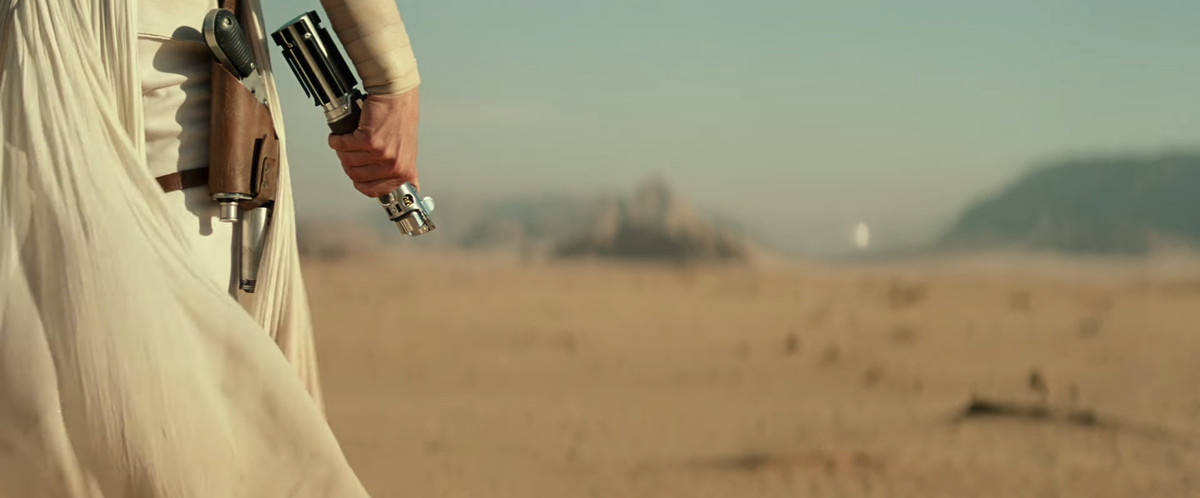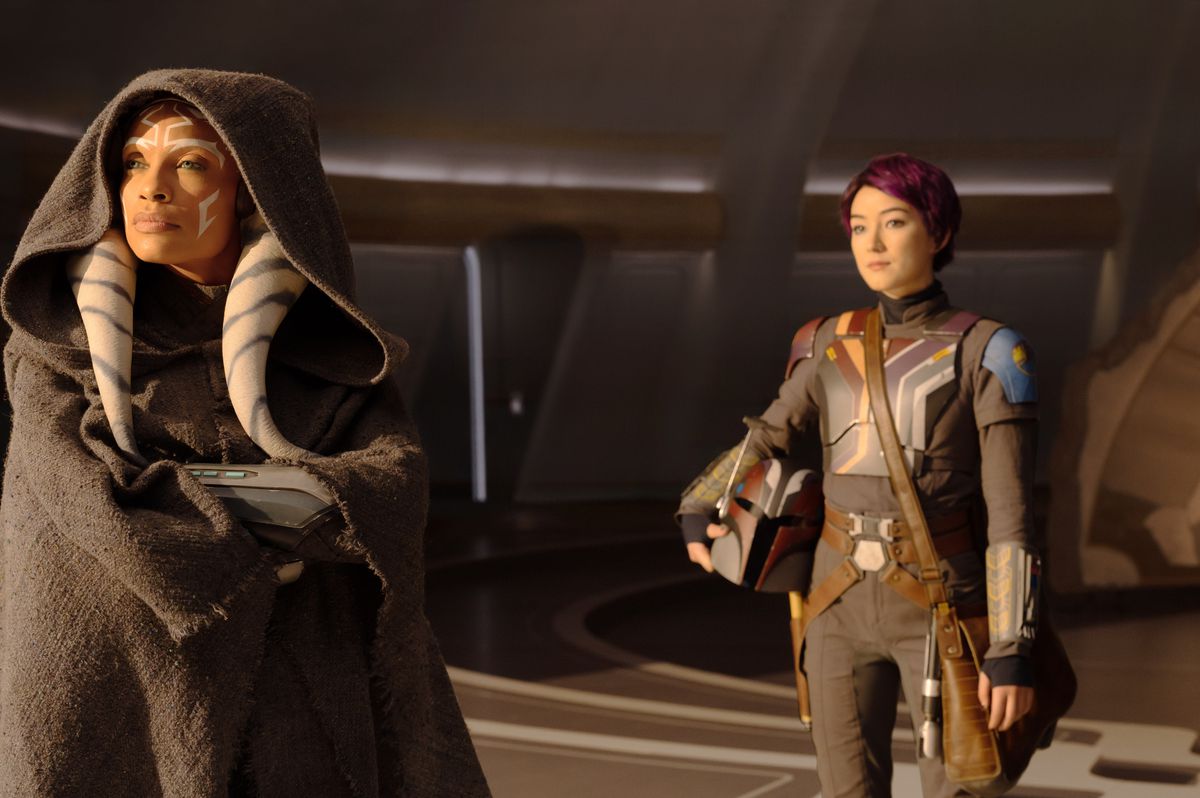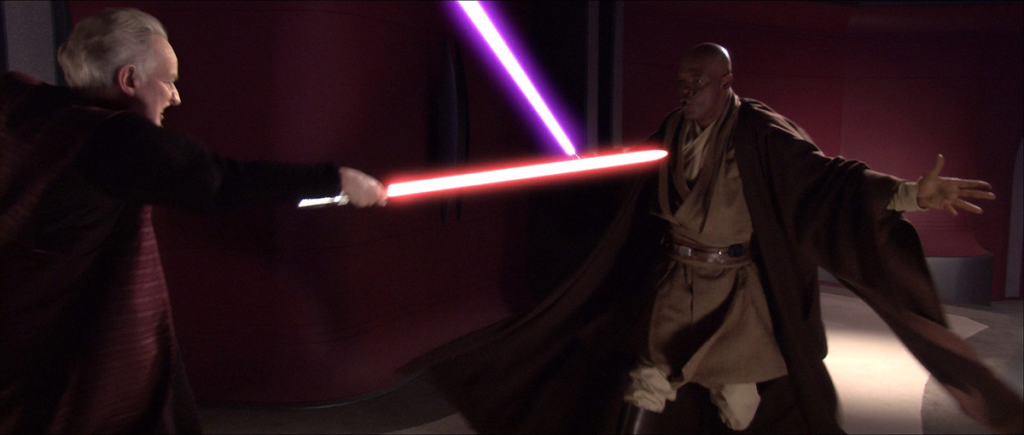Star Wars doesn’t really have a future right now. The franchise itself does — it will keep getting new entries forever if Disney has anything to say about — but the story can’t escape the Skywalkers or imagine a future beyond the franchise’s most-featured family. In fact, most of the recent TV spinoffs, like The Mandalorian, The Book of Boba Fett, Obi-Wan Kenobi, Andor, and Ahsoka, have just been filling in the gaps between the main movies. But with Disney Plus’ new show The Acolyte, Lucasfilm is finally venturing outside of the time period of the Skywalker Saga by letting us know that Star Wars’ true future is in the past: in a time known as the High Republic.
To understand why Lucasfilm is once again taking the franchise backward, it’s important to understand exactly what the High Republic is and where it started. The High Republic was first introduced to Star Wars canon in 2020 as a series of books. The books were designed to introduce fans to a new era in Star Wars history that had never been explored before, and to open the franchise up for more inventive stories in a time period that had a little more canonical freedom. Since then, there have been over 50 books, comics, and short stories written about the High Republic era, all tied together and telling different sides of one larger story about the time period. Despite all that, The Acolyte will be the first time the High Republic appears on screen.
Beginning around 1,000 years before the opening moments of the Skywalker Saga, the High Republic is a period in the history of Star Wars that feels highly calculated by Disney for maximum franchise potential. It’s a setting that provides plenty of distance (over 25,000 years) from the beginning of the Old Republic, Lucasfilm’s attempt at inventing a new past for Star Wars after the prequel movies were released and before the rights were sold to Disney, while also giving creators the opportunity to explore the opulence and technological marvels of the galaxy long before the lackadaisical Jedi Order of the prequel films handed it over to Palpatine’s Empire.
Image: Lucasfilm
All of this makes perfect sense for novels and supplementary materials. Diving into the past provides writers with tons of open space to tell stories, create characters, and generally build new lore, without the need to be tied back into the existing franchise plans or the risk of running afoul of the canon story that the main movies and shows are advancing. But for the last five years, the movies and shows have stopped advancing anything; they’ve been as tied to the past now as everything else.
Lucasfilm’s apprehension toward the future, like so many other Star Wars problems, is tied up in the creative finiteness of Disney’s sequel trilogy. Rather than taking a grand step into the larger future of the Star Wars universe, they were instead tightly stitched to the legacy of the movies that preceded them, sewing longtime stalwarts like Luke and Han into the very fabric of their story. Lucasfilm used its biggest platform in a decade to build a box around on-screen Star Wars stories that was only as big as the Skywalker family — and its members both real and imagined — taking a grand story and making it feel disappointingly small.

Image: Lucasfilm
On top of that, while financially successful, the cultural memory and fondness for those movies is spotty at absolute best (and downright disastrous at worst). The dubious reception of these movies made moving the story forward after the trilogy feel like a creative risk that wasn’t worth taking. The series, therefore, had to turn in on itself, exploring the little pockets of the Skywalker Saga that the nine-movie saga couldn’t reach during their run time. This creative effort has been led largely by Dave Filoni, who rose to Star Wars fame through his work on the Clone Wars animated series. While Filoni is fiercely loyal to George Lucas’ original works, Clone Wars was a show that was entirely designed around this filling-in-the-gaps style of storytelling, and it’s a mentality he has carried forward into his work on the Disney Plus live-action series as well. All of this leaves the impression of a universe that somehow shrinks with each successive entry. Rather than expanding the galaxy, it just gets more microscopic and interconnected with each episode.

Photo: Suzanne Tenner/Lucasfilm
It’s easy to see why this kind of creative conservatism is particularly appealing to Disney at this moment in Star Wars history. The franchise is one of the company’s biggest creative properties, and nearly every big swing or risky move it’s tried so far has been either divisive, like the sequel trilogy, or an outright disaster, like the Star Wars hotel. So rather than put the franchise in jeopardy, Disney has spent the last several years opting to put it in creative stasis instead. Only greenlighting on-screen projects that fit neatly into the universe, showing fans more of the characters they already care about, and changing very little — with the exception of the proposed Rey movie in the distant future.
In this way, The Acolyte, and Star Wars’ future in the High Republic in general, is particularly exciting. It’s, by definition, a breath of fresh air for the series, a step away from the recent run of series whose plots can be succinctly organized into a list of famous character cameos. It’s also hopefully a sign that Star Wars will soon escape the Skywalker legacy and the gravitational pull of Filoni’s method of burrowing deeper into the universe rather than expanding it.
And for its part so far, the High Republic has been fairly exciting as a space for unique Star Wars stories. The entire era started with a story about the galactic response to a hyperspace disaster, and has come to encompass different sects of Force-believers and even an anti-Force conspiracy that’s more interesting and generally clandestine than Star Wars has been capable of in the recent past. The Acolyte, too, based on its trailers, seems to be diving into a very unique kind of Jedi story, a murder mystery with shades of both martial arts movies and serial killer thrillers. But it’s hard not to view this trial balloon for Star Wars’ future with a bit of disappointment as well. Just because the time period is different doesn’t mean it’s more risky or daring.
No matter how big the frame of the High Republic becomes, or how many movies and shows we spend there, it can never really be a step forward for the franchise until Star Wars actually moves forward in time. A leap 1,000 years into the future instead of the past is a creative risk, of course, but one that would at least feel lively and exciting. For all its promise, the High Republic is still, like all the rest of Star Wars over the last several years, pushing toward a future we already know by heart. But if Star Wars has to be stuck in the past, at least the High Republic is going far enough back to give us some original stories and some new dynamics to the Force. And if The Acolyte is good, perhaps we’ll get enough series and movies set there for the era to reveal a few new surprises and wrinkles to the Star Wars universe. Either way, at the very least, we can watch an eight-episode series knowing there won’t be a single Skywalker in sight.

